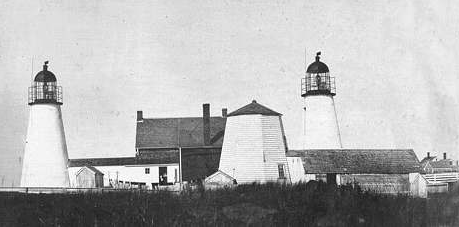Tree branch: Anderson
Relation: My 3x great-grandmother (My mom's dad's mom's mom's mom)
How do we know she was tambourer? The 1871 Scotland Census mentions her occupation. See it highlighted in red.
Do you like British historical TV shows about upstairs/downstairs stories like Downton Abbey? It turns out my ancestor was part of the "downstairs" staff in a grand English country manor.
Yes! I finally found a British King in my family tree! I am a descendant of Kings!
Marriage certificates in Great Britain are great! I love that they include the bride and groom's signatures. How cool is it to see our ancestor's handwriting?! However, there is one exception: when they sign with their mark. What is that?
Let's check out two examples from my family that are 100 years apart.
In 1871, my 2x great-grandfather signed his own name, John Boyle. But his new bride wrote an X and the clergyman wrote "The mark of Catherine O'Neill".
Why?
Why did they sign with a mark? There are multiple theories.
My name is Euphemia Anderson and I'm heartbroken. My mother, Agnes Crosser, just visited our little home to ask us if we could take her in. Even though we desperately want to help her, there is just no way my husband Robert and I can afford it.
To understand our background, Agnes was a single mom. Her husband died before I was born and my 38-year-old mom never remarried. Life was tough for us as she supported us seven children by selling piece work. My grandparents had passed away, so we were on our own.
Eventually my siblings and I grew up, got married and started our families. Three of us stayed nearby Bothwell, three of my older brothers either died or were out of the picture. Sadly, my sister Agnes passed away in 1874 when she was just 21 years old.
When my mom was 65 years old in 1885, she was unable to support herself. That was the first time she came to us for help. By that time we already had five children under the age of 7, with one on the way. My husband's salary as a miner could barely feed us.
My sister Ann also tried to help when she could, but having 6 children herself, they also were just surviving. My brother James went to America in 1881 (8 years ago) and has not been in contact.
It is now August 29, 1892, and we have nine children. So since neither of us siblings have the means or the space to take her in, today my mom has to go the Poorhouse. It's the fourth time since 1885 and it's killing me.
I don't want my mom to be in the Poorhouse! (Or the Workhouse as the English called it.) The diet and living conditions are very austere (this discourages applications from those who could otherwise rely on family support), so it is definitely a last resort only for those considered destitute. Thankfully they have medical care there.
In 1885, my mom was in the Poorhouse for 11 days, in 1886 for a period of time I can't remember, and in 1890 for 3 days. Each time, we were able to get her out somehow or she received an allowance from the government.
Fast forward: I'm so happy that my nephew Thomas Porteous is willing to maintain my mom. He's so sweet to support his grandma. She was only in the Poorhouse for 12 days this time, and thankfully, it was the last time!
 |
| Charles Nelson Smith, my great-grandfather, sporting the world's best bow tie, may not have had a relationship with his father, who grew up in a lighthouse. |
 |
| 1868: My great-great grandmother Fannie Naomi Abby Gibbs, about 3 years old and her older brother. |
A very underexposed negative image was produced on a thin iron plate. It was blackened by painting, lacquering or enamelling, and coated with a collodion photographic emulsion. The dark background gave the resulting image the appearance of a positive.
 |
| I scanned this document from a book of land records from the Woodstock Town Hall in 2016. |
 |
| How I am related to the buyer and seller. You can see that William is from the Morris side and Ephraim is from the Titus side (both from my paternal line). |
 |
| 1841 brick towers. |
 |
"Mrs. Titus, too, seems to have come from a family as patriotic as that of her husband, for her paternal grandfather, William Morris, was in the battle of Concord and Lexington and rose in the service until he became a first lieutenant."Wow! Imagine that, what are the odds?! Upon reading it, my emotions went from awe to disbelief in about one minute. (But it was a fun minute!) I had to investigate this William Morris person.
"William was clerk of the company which marched from Woodstock in response to the Lexington Alarm."What is the Lexington Alarm? Once Paul Revere stopped riding, other messengers got on their horses to pick up where he left off. They rode to other towns to give them the news about Lexington and Concord. Town militias had already been organized all over New England and the other colonies. When these volunteer soldiers heard of the fighting, they marched "for the Relief of Boston," including 34-year-old William. The Lexington Alarm began with Paul Revere's ride and continued with the colonies' response to the beginning of the war. The Lexington Alarm is not the name of the battle on April 19. (See timeline on nps.gov)
 |
| Researching family history in Woodstock, Connecticut, 2016. |